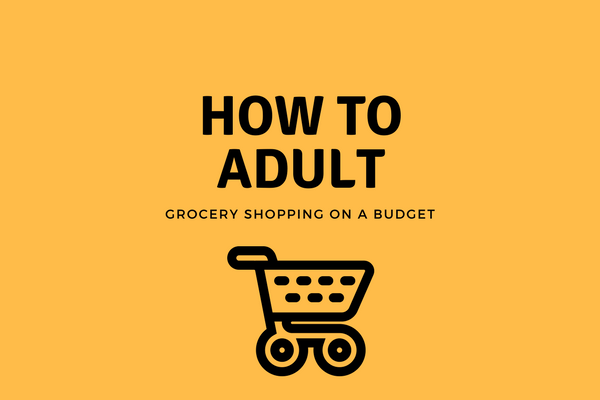
Photo by Grant Baker
Learn how to eat healthy without breaking the bank.
How to Adult: Grocery Shopping on a Budget
Food: a shared necessity among humans everywhere. You have to eat. As an independent adult living alone, there comes a tremendous amount of responsibilities that did not exist as a teenager. It turns out that keeping yourself alive and healthy requires grocery shopping.
In college and even after college, a real possibility of funds being tight arises. This makes frugality and budgeting a top priority. Budgeted grocery shopping though does not mean giving up healthy, well-balanced meals.
The Requirements
When grocery shopping and planning out a balanced meal, you need to factor in the necessary parts including dairy, a protein, a starch, a vegetable and a carb. These make up the balanced diet an average home needs (excluding things like allergies or dietary requirements).
Off Brands
When on a tight income, you must sacrifice name brand items like Frosted Flake and Oreos, but equally satisfying alternatives exist. These generic types of food get a bad wrap, but you get the same quality at a better price. While a box of Kellogg’s Frosted Flakes costs $5.68 for 33 ounces the generic counterpart, Malt-O-Meal Frosted Flakes costs $4.98 for 40.5 ounces. Not only a 70 cent difference, but also seven and a half ounces more in the off brand giving you more for less.
Smart Shopping
Picking up tips to help with smart shopping comes from years of practice and experience. First-time shoppers pick out a gallon of milk based on the first one they touch and not on the expiration date. A good rule to go by, check all the milk jugs to see which one expires last, in order to get a longer use of it while still paying the same as the jug that expires earlier. Grabbing from the back rather than the front will give you more longevity since stores stock back to front. Also, check eggs before you buy them to see if cracks exist or if any eggs have broken.
Buy extra. Foods that have a longer shelf life should be bought in extras for leftovers. Some days you will not feel like cooking. Instead of spending a fortune on take-out, heat up the spaghetti you had Monday.
Common Mistakes
Going Shopping when hungry: a common mistake that will lead your shopping trip from buying a few things for a small dinner to buying for a feast.
Disappointment comes when you get home and realize you have never eaten salmon before, let alone know how to prepare it, so in an attempt to save money (and sanity) always eat before. This seemingly simple tip could make the difference of not buying the whole store and items that mold away in the back of the refrigerator for months.
Being Prepared:
-Make a list. As a novice shopper, chaos arises when you attempt to improvise. First off, confusion will strike without a goal and knowing what to get makes your trip two to three times longer. Making a list will save you time, energy, and money.
-Plan out your meals. This beneficial organizing strategy will save valuable time and energy. If you have each day you eat at home planned out it will save you the stress of worrying about it later. This strategy will also become useful when needing to know how much of an item you need.
-Staple items such as sugar, flour, ketchup, salt and other items alike should be bought in bulk. These are common items to prepare a meal so you will not want to run out. Also, most of the time buying a family-sized bag comes out less expensive than buying multiple. A thing of Gold Medal All Purpose Flour, five pounds costs $2.56 and a thing of Gold Medal All Purpose Flour, 10.0 pounds costs $4.88. Two of the five-pound bags costs $5.12, 24 cents more than the 10-pound bag.
Shopping, though it sounds simple, is an important skill to obtain. As painful as being on a tight income may be, your refrigerator will not have to suffer loneliness if you know how to plan and budget well. Being an adult may be hard, but being able to eat should not.